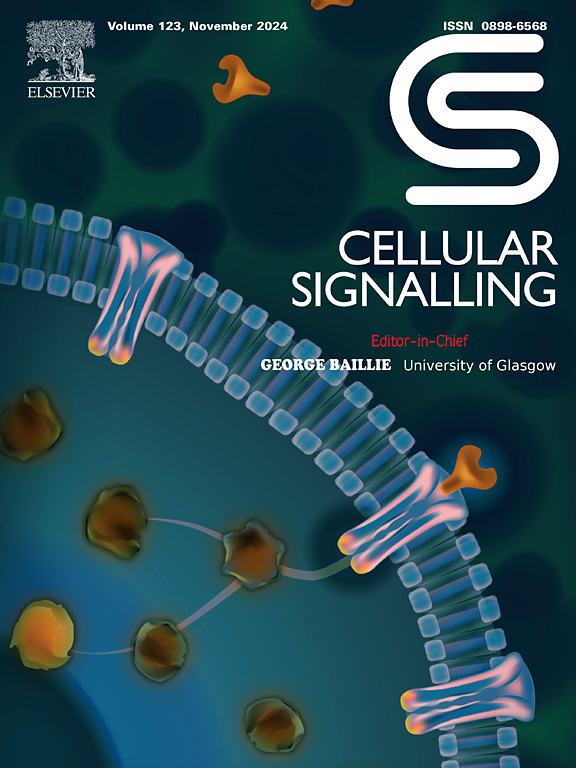tRNA 衍生的小 RNA 在胃癌预后中的调控作用。
IF 4.4
2区 生物学
Q2 CELL BIOLOGY
引用次数: 0
摘要
近年来,人们发现 tRNA 衍生的小 RNA(tsRNAs),包括 tRNA 衍生的应激诱导 RNAs(tiRNAs)和 tRNA 衍生的片段(tRFs),具有特定的结构并富集于体液中,具有特定的生物学功能。本文总结了 tsRNAs 的生物发生、分类、亚细胞定位和生物学功能。研究证明,tsRNAs 影响肿瘤细胞的增殖、凋亡、迁移和侵袭,并在调控各种肿瘤的发生和发展中发挥作用。在胃癌(GC)中,tRF-33-P4R8YP9LON4VDP、tRF-17-WS7K092、tRF-23-Q99P9P9NDD 等 tsRNAs 的失衡与胃癌患者的临床病理特征密切相关。一些 tsRNAs,如 tRF-23-Q99P9P9NDD、tRF-31-U5YKFN8DYDZDD 和 tRF-27-FDXXE6XRK45 能促进 GC 细胞的增殖、迁移和侵袭。其他 tsRNAs,如 tRF-41-YDLBRY73W0K5KOVD、tRF-18-79MP9PO4 和 tRF-Glu-TTC-027 则抑制 GC 细胞的增殖、迁移和侵袭。这些tsRNAs通过几种信号通路,如磷酸肌酸3-激酶(PI3K)-AKT丝氨酸/苏氨酸激酶(AKT)、Wnt-β-Catenin和丝裂原活化蛋白激酶(MAPK)通路,对GC的发生发挥作用。这些发现可能会为 GC 的诊断和治疗提供新的策略。本文章由计算机程序翻译,如有差异,请以英文原文为准。
The regulatory role of tRNA-derived small RNAs in the prognosis of gastric cancer
In recent years, tRNA-derived small RNAs (tsRNAs) including tRNA-derived stress-induced RNAs (tiRNAs) and tRNA-derived fragments (tRFs), with specific structure and enriched in body fluids, have been found to have specific biological functions. In this paper, the biogenesis, classification, subcellular localization, and biological functions of tsRNAs were summarized. It has been proved that tsRNAs affected tumor cells in proliferation, apoptosis, migration and invasion, and played roles in regulating the occurrence and development of various tumors. In gastric cancer (GC), the imbalance of tsRNAs, such as tRF-33-P4R8YP9LON4VDP, tRF-17-WS7K092, tRF-23-Q99P9P9NDD and others, was closely related to the clinicopathological characteristics of GC patients. Some tsRNAs, such as tRF-23-Q99P9P9NDD, tRF-31-U5YKFN8DYDZDD, and tRF-27-FDXXE6XRK45 promoted the proliferation, migration and invasion of GC cells. Other tsRNAs, such as tRF-41-YDLBRY73W0K5KKOVD, tRF-18-79MP9PO4, and tRF-Glu-TTC-027 inhibited the proliferation, migration and invasion of GC cells. The tsRNAs played roles in the occurrence of GC were through several signaling pathways, such as phosphoinositide 3-kinase (PI3K)-AKT serine/threonine kinase (AKT), Wnt-β-Catenin, and mitogen-activated protein kinase (MAPK) pathways. These findings may provide new strategies for the diagnosis and treatment of GC.
求助全文
通过发布文献求助,成功后即可免费获取论文全文。
去求助
来源期刊

Cellular signalling
生物-细胞生物学
CiteScore
8.40
自引率
0.00%
发文量
250
审稿时长
27 days
期刊介绍:
Cellular Signalling publishes original research describing fundamental and clinical findings on the mechanisms, actions and structural components of cellular signalling systems in vitro and in vivo.
Cellular Signalling aims at full length research papers defining signalling systems ranging from microorganisms to cells, tissues and higher organisms.
 求助内容:
求助内容: 应助结果提醒方式:
应助结果提醒方式:


